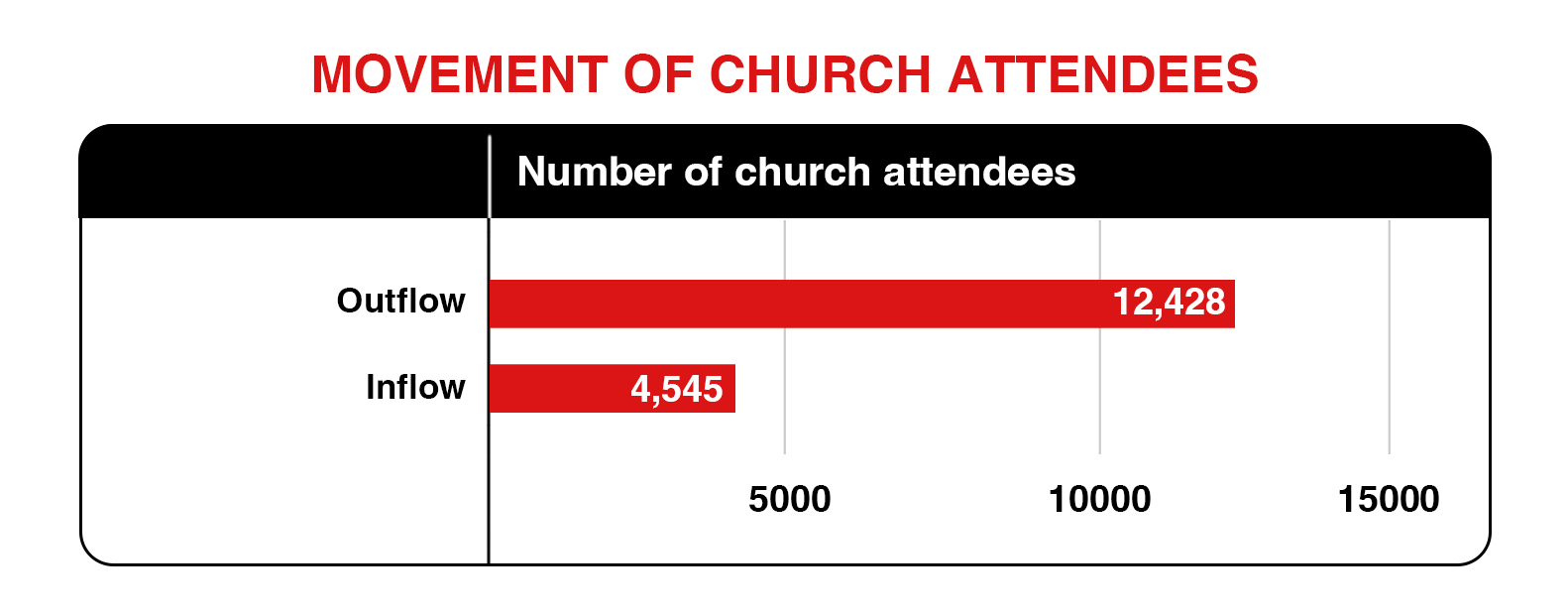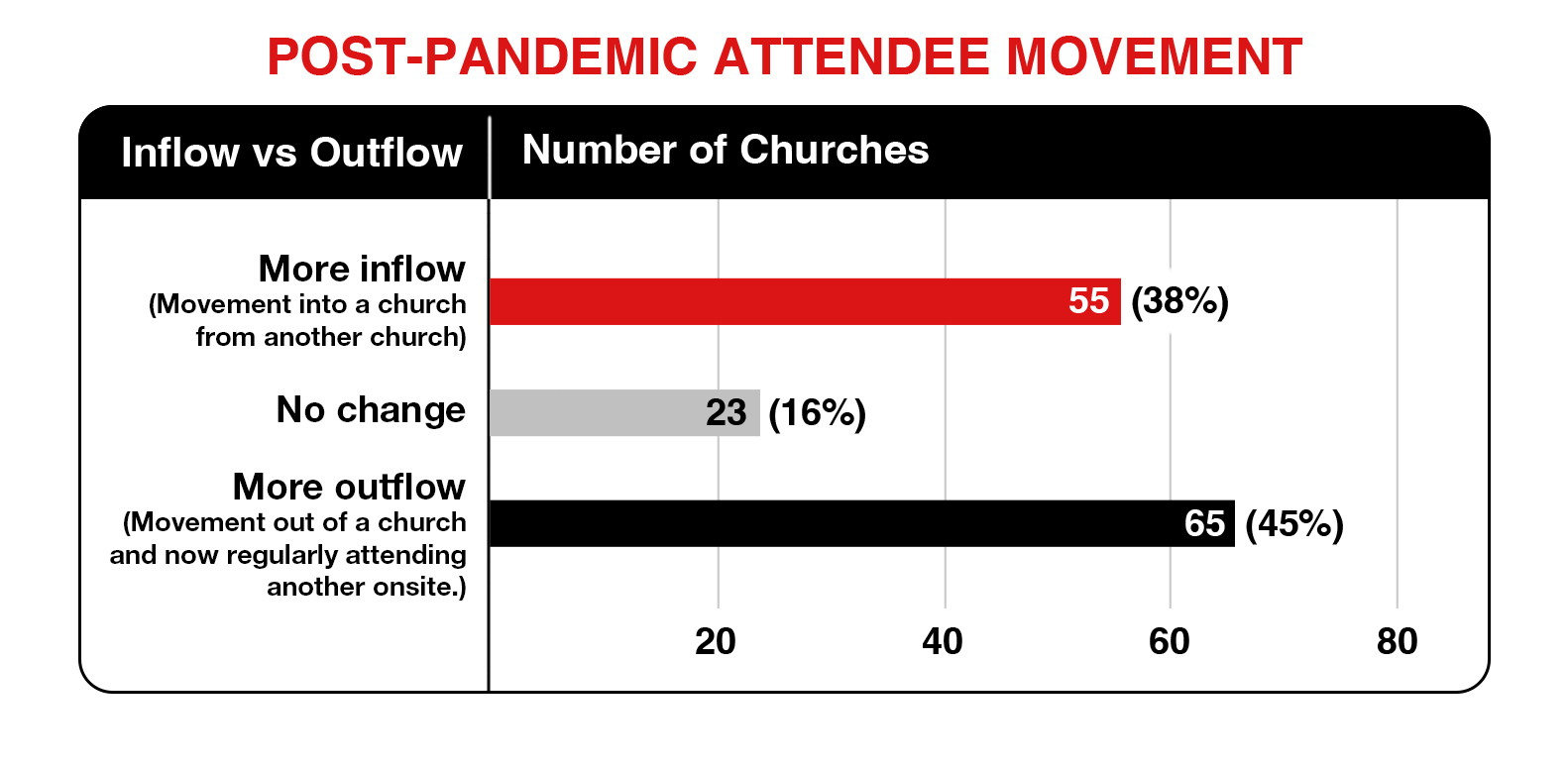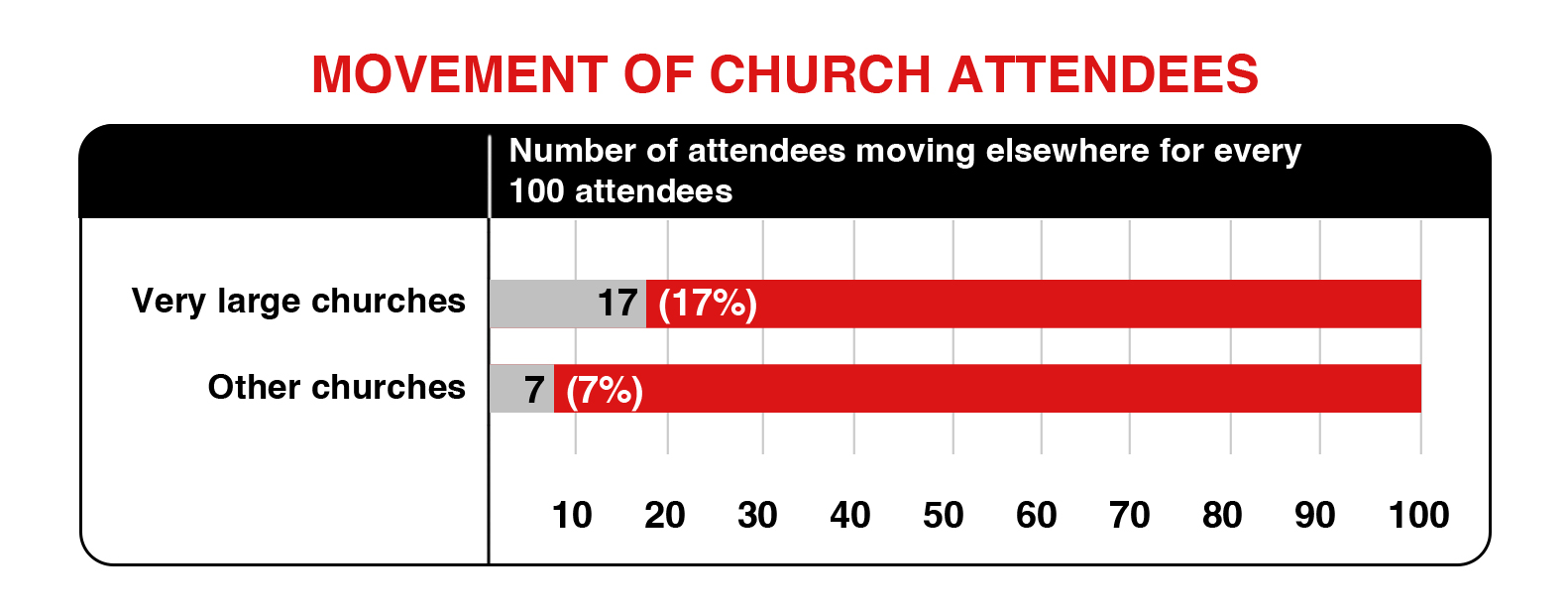As churches emerge from the COVID-19 pandemic, a higher number have experienced “more outflow” of attendees compared to “more inflow” or “no change”, according to recently released findings from the State of the Church in Singapore 2022.
Published on October 13 (Thursday), the first-of-its-kind study seeks to provide a picture of the state of the Church here, with data collected between July and August.
Represented in the study are 144 churches and almost 105,000 attendees. In other words, close to a third of the number of Protestants in Singapore.
Notably, this quantitative study is also a collaboration between three local Bible schools – Biblical Graduate School of Theology, Singapore Bible College and Trinity Theological College – and Salt&Light, a Thirst Collective brand.
Lead pastors or their equivalent were surveyed on a range of topics, including how the pandemic has affected the attendance and activities of their church.
In this article, we will focus on the movement of people between churches, which has been highlighted as the single greatest factor that may explain the drop in onsite attendance from pre-pandemic levels.
More significantly, the researchers also found an age connection — churches with a high proportion of young adults tended to receive attendees from other churches and also grow in size.
Here are 3 things we know from the study:
1. Substantial outflow of people from one church to another

As a whole, there was an aggregate of 12,428 of attendees who went on to regularly visit another church’s service onsite (outflow).
This is around 12% of the total number of attendees accounted for by the churches.
On the other hand, participants saw an aggregate of 4,545 regular visitors from other churches attending their services (inflow).

This is also reflected in the number of churches that reported more outflow (65), compared to more inflow (55) and no change (23).
2. Larger churches have more people moving out
The report observed that churches that experienced more outflow than inflow tended to be medium, large and very large churches (>250 attendees).
In fact, very large churches (>2,000) accounted for 9,010 attendees, or almost three-quarters of all outflow.

Very large churches also had an average outflow of 17% — 17 out of every 100 attendees moved elsewhere.
Other churches, in contrast, had an average outflow of 7% — 7 out of every 100 attendees moved elsewhere.
However, the researchers also note that very large churches would have faced the most challenges in accommodating high numbers of attendees due to Safe Management Measures.
3. Young adults are going to churches with a high proportion of young adults
One question that was asked was whether demographics can explain the movements.
The data indeed showed:
- a significant correlation between inflow of young adults and proportion of young adults.
- a significant correlation between the increase in attendees and proportion of young adults.
This pattern of correlations was not observed for all other age groups.

What now?
In the report’s concluding remarks, the reality of people changing churches is one of the issues that was highlighted.
“For those who have lost more than gained attendees, an honest reflection on the church’s situation, leading to change, may be called for,” the authors wrote.
“And for those who have gained more than lost attendees, it is worth considering how and why they receive transfers from other churches, knowing that such movements can have adverse impact on other churches.”
The authors also asked a pertinent question: Why are young adults leaving?
“We have observed that some churches have taken in more young adults from other churches; hence some churches are losing young adults,” they said.
“This should be a matter of concern, especially for churches that already have a small proportion of young people and an increasing aged population.”
While this question would certainly require more discussion, there have been some attempts to make sense of these trends by different ones who were involved in the making of this report.
Here are just a few excerpts of their reflections:
The chance for churches to re-align
Dr Samuel Law, Associate Professor of Intercultural Studies, Singapore Bible College
“… the trends of generational leadership change and the departure of young adults in Singapore are part of a global pattern that has spread from the West to the Majority World. What was seen in US two decades ago was seen in Korea a decade ago and is now being seen among the churches in Singapore.
“The trends are closely aligned with the rise of secularism and postmodernity and the beginnings of deglobalisation. These changes have resulted in many churches isolating themselves from the world and looking inward.
“Many self-identified and forgot their role as God’s people in the world (see the Church’s role in John 17). Ministry and outreach became centripetal, inwardly focused, rather than centrifugal, outwardly focused.

“… One group that is most affected by these changes is the young adults, which this study has highlighted as the group with the greatest movement during the pandemic.
“Young adults, a product of globalisation and the most connected of the five living generations, increasingly became strangers in their own church families.
“Hence, when the pandemic hit, untethered from physical relationships and spaces, these digital natives were able to migrate freely through the digital space to arrive at new church homes.”
The importance of community
Priscilla Jamir, Angie Ng and Pastor Amos Pang, Young Adults on the Research Team
“The pandemic has amplified the importance of community. With the limits on size of gatherings, physical services and other activities, many of us missed the fellowship.
“While Safe Management Measures is a significant factor, the fact that small churches were unlikely to experience a decrease in attendance shows the value of stronger and closer interpersonal relationships

“As young adults, we were particularly interested in the net inflow and outflow of young adults. The medium-sized, young adult-heavy churches saw the most increase in attendees, many from other churches.
“We recognise factors such as the churches’ ability to pivot to digital platforms more quickly and the appeal of content that was already catered to the young adults.
“However, it may also be the poignant realities of a consumerist attitude to realise needs which the current church does not satisfy, or an honest search for their own faith through other churches. We could surely do more in terms of the discipleship of young adults.
“As we return to large gatherings and more activities, may we continue to remember our innate desire for community, and consider how we may better create space and time for personal connections and care for one another.”
The full report can be found on saltandlight.sg/sotc2022.
As this is only the first State of the Church in Singapore study, the team also hopes to conduct this on a regular basis so that trends and trajectories can be observed.
Do look out for more stories on Thir.st and Salt&Light in the coming weeks, where we will be publishing more findings and further analysis.
Have a reflection to share? Send it to us at [email protected]!
- Do you feel connected or disconnected to your church family? Why?
- What does church mean to you? How has the pandemic affected the way you view it?
- What is the purpose of church?









